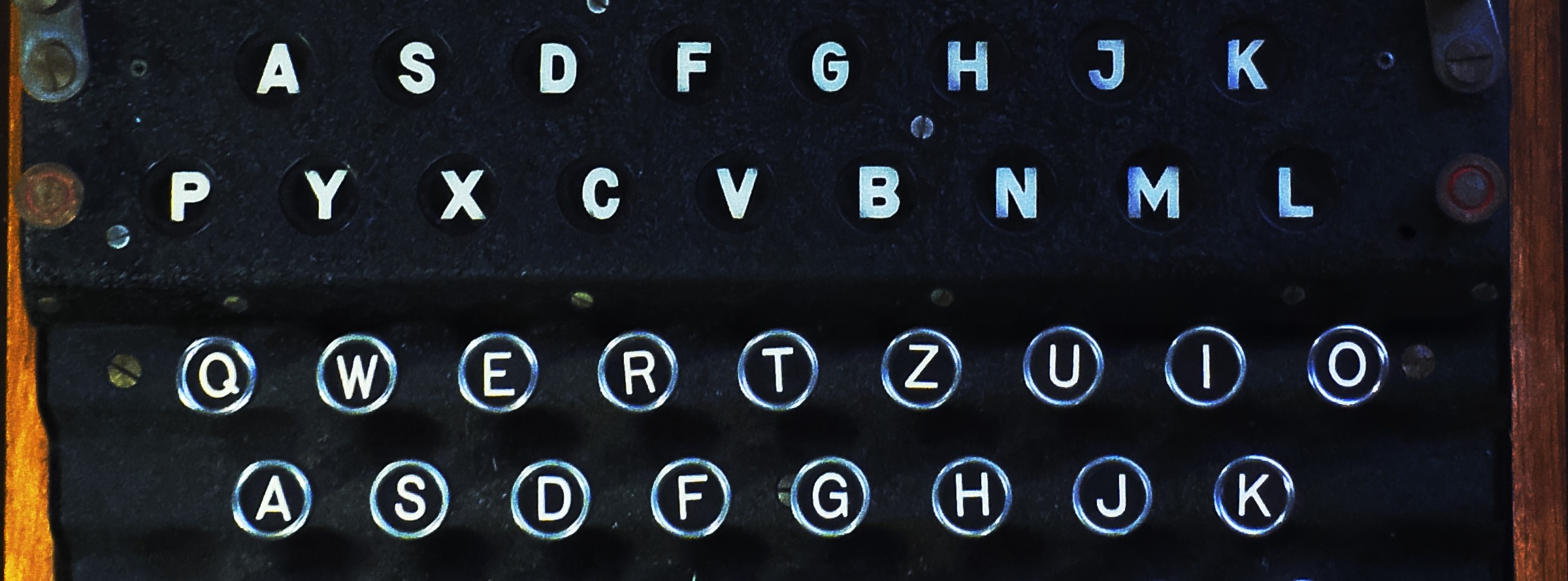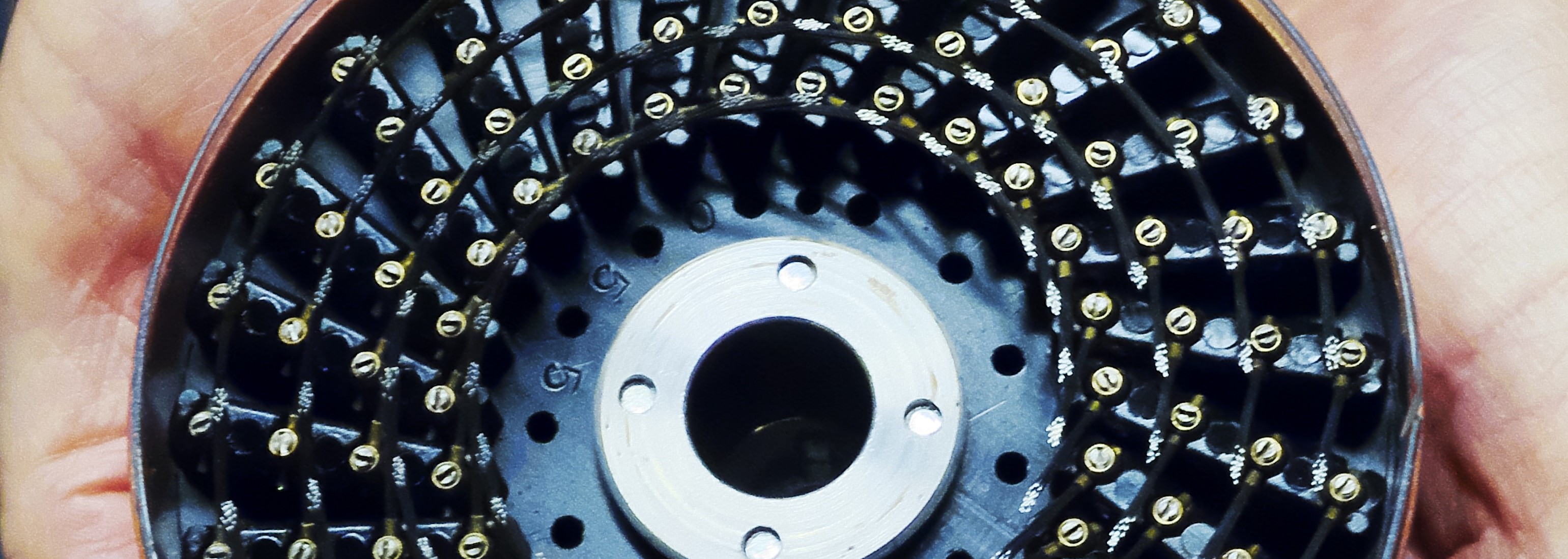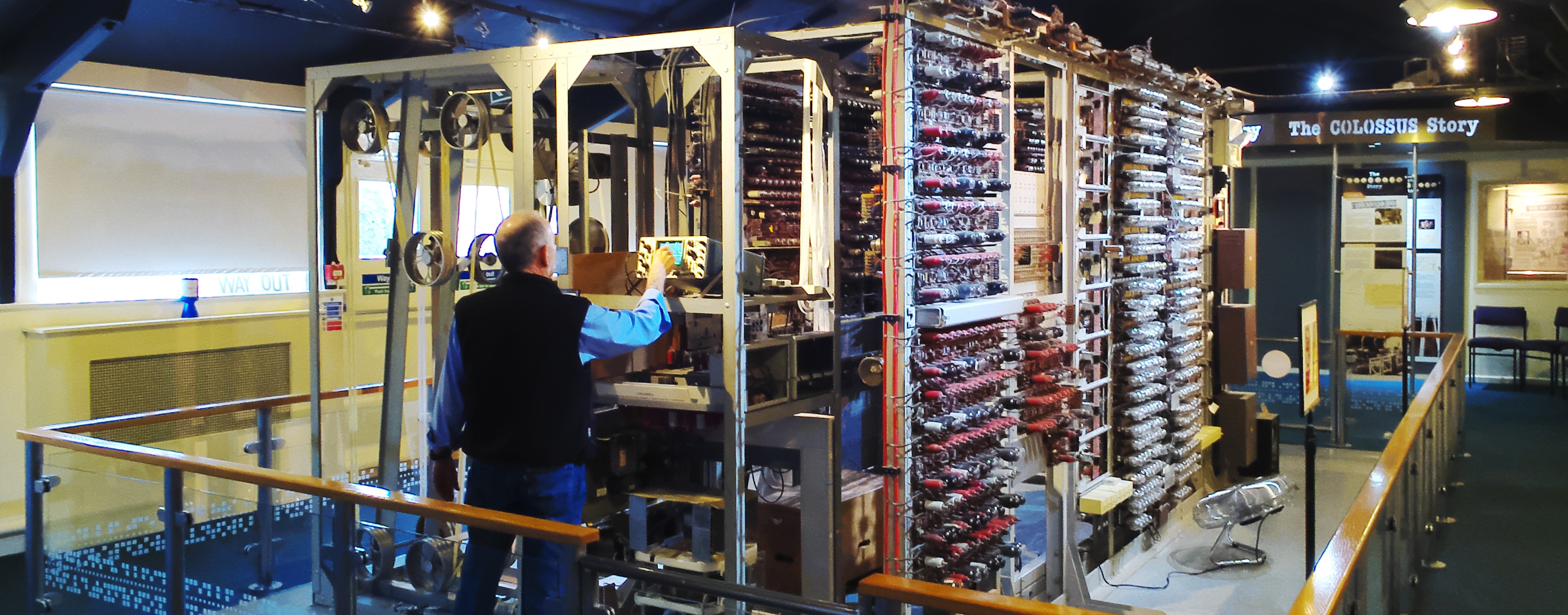As a bonus for everyone attending, books by many of our speakers will be available for sale on-site during our weekend. Their authors will gladly sign them for you if at all possible. Our bookstall is run by City Books of Brighton, and they’ll have other related books for you to consider also.
Here is a list of just some of the books you’ll be able to buy, and have signed if you are at the event at the same time as the author. All books are subject to availability.
- Alan Turing Decoded — Sir Dermot Turing
-
Alan Turing was an extraordinary man who crammed into a life of only 42 years the careers of mathematician, codebreaker, computer scientist and biologist. He is widely regarded as a war hero grossly mistreated by his unappreciative country and it has become hard to disentangle the real man from the story. It is easy to cast him as a misfit, the stereotypical professor.
But actually Alan Turing was never a professor, and his nickname ‘Prof’ was given by his codebreaking friends at Bletchley Park. Now, Alan Turing’s nephew, Dermot Turing, has taken a fresh look at the influences on Alan Turing’s life and creativity, and the later creation of a legend.
For the first time it is possible to disclose the real character behind the cipher-text: how did Alan’s childhood experiences influence the man? Who were the influential figures in Alan’s formative years? How did his creative ideas evolve? Was he really a solitary, asocial genius? What was his wartime work after 1942, and why was it kept even more secret than the Enigma story? What is the truth about Alan Turing’s conviction for gross indecency, and did he commit suicide? What is the significance of the Royal Pardon granted in 2013?
In Dermot’s own style he takes a vibrant and entertaining approach to the life and work of a true genius.
- Demystifying The Bombe — Sir Dermot Turing
-
Dermot Turing’s book, Demystifying the Bombe, is an insightful look into the development and workings of the Turing-Welchman Bombe.
It is an ideal read for those intrigued by the challenges, ideas and mechanics behind the machine credited to have been one of the key innovations at Bletchley Park that helped launch the information age.
It is also a chance to learn how the Bombe became an invaluable tool in the battle to decode the thousands of secret messages encrypted by the German Enigma machines during World War Two.
- The Secrets of Station X — Michael Smith
-
This is the astonishing story of how the British codebreakers of Bletchley Park cracked the Nazi Enigma cyphers, cutting an estimated two years off the Second World War. It never ceases to amaze its readers.
No one is better placed to tell that story than Michael Smith, whose number one bestseller Station X was one of the earliest accounts. Using recently released secret files, along with personal interviews with many of the codebreakers themselves, Smith now provides the definitive account of everything that happened at Bletchley Park during the war, from breaking the German, Italian and Japanese codes to creating the world’s first electronic computer.
The familiar picture of Bletchley Park is of eccentric elderly professors breaking German codes, but in fact the vast majority of people who worked at Bletchley Park were young women. For them and for the young graduates plucked from Britain’s best universities who did the bulk of the day-to-day codebreaking, this was truly the time of their lives.
The Secrets of Station X tells their story in full, providing an enthralling account of one of the most remarkable British success stories of all time.
- The Debs of Bletchley Park and Other Stories — Michael Smith
-
For Winston Churchill the men and women at Bletchley Park were ‘the geese the laid the golden eggs’, providing important intelligence that led to the Allied victory in the Second World War.
At the peak of Bletchley’s success, a total of twelve thousand people worked there of whom more than eight thousand were women. These included a former ballerina who helped to crack the Enigma Code; a debutante working for the Admiralty with a direct line to Churchill; the convent girl who operated the Bombes, the top secret machines that tested Enigma settings; and the German literature student whose codebreaking saved countless lives at D-Day.
All these women were essential cogs in a very large machine, yet their stories have been kept secret.
In The Debs of Bletchley Park author Michael Smith, trustee of Bletchley Park and chair of the Trust’s Historical Advisory Committee, tells their tale. Through interviews with the women themselves and unique access to the Bletchley Park archives, Smith reveals how they came to be there, the lives they gave up to do ‘their bit’ for the war effort, and the part they played in the vital work of ‘Station X’.
They are an incredible set of women, and this is their story.
- The Emperor’s Codes — Michael Smith
-
While Allied Forces understandably pursued a “Europe-first” policy in the Second World War, the Japanese threat in the Far East grew with every passing month. Popular history credits the Americans with breaking Japanese codes and saving perhaps two years of conflict. This is not Michael Smith’s view.
The Emperor’s Codes uses recently released British archive records to fill in the details of British and Australian involvement in the Far East. In fact, Smith goes further and controversially concludes that internal bickering in the US military, compounded by a less than open exchange of information with the British, ‘must have cost many lives, the majority of them American’. In addition, he observes that the Allies knew a Japanese “unconditional surrender”, dependent on Emperor Hirohito remaining on the throne, was on the cards before the atomic bombs were dropped on Hiroshima and Nagasaki, throwing into considerable doubt the need for such demonstratively horrific tactics.
- Britain’s Secret War — Michael Smith
-
Britain’s Secret War tells the astonishing story of how Britain’s spies, boffins and special operations teams helped to win the Second World War.
The work of the Bletchley Park codebreakers in breaking the German Enigma cipher is estimated to have cut the length of the war by around two years, saving countless lives, while the Double Cross system, in which German secret agents were “turned” by the British to feed their Nazi agent-runners with false information, ensured the success of the D-Day landings.
“The Secret War” not only reveals new details about these remarkable operations but also tells the real story of how MI6 turned the disaster of lost networks across Europe into triumph. The stories range from extraordinary courage to the bizarre with even astrologers and a stage magician brought in to help get intelligence and allied aircrew out of Nazi-occupied Europe.
Intelligence historian Michael Smith describes the work of all the participants in the Secret War, revealing a host of new heroes, and heroines, along the way.
- Station X: The Codebreakers Of Bletchley Park — Michael Smith
-
In 1939, several hundred people — students, professors, international chess players, junior military officers, actresses and debutantes — reported to a Victorian mansion in Buckinghamshire: Bletchley Park. This was to be ‘Station X’, the Allies’ top-secret centre for deciphering enemy codes.
Their task was to break the ingenious Enigma code used for German high-level communications. The settings for the Enigma machine changed continually and each day the German operators had 159 million million million different possibilities. Yet against all the odds this gifted group achieved the impossible, coping with even greater difficulties to break Shark, the U-Boat Enigma, and Fish, the cypher system used by Hitler to talk to his guards.
- Secret Postings: Bletchley Park to The Pentagon — Charlotte Webb (Betty Webb MBE)
-
At 18 years of age, Charlotte Vine-Stevens leaves college and volunteers for the ATS, the Womens’ Army. After basic training she is given a travel warrant and instructions to go to Bletchley Station.
Between 1941 and 1945 Charlotte finds herself stationed at the Government Code and Cypher School’s codebreaking operation at Bletchley Park.
After working with Major Ralph Tester in the Bletchley Mansion, she moves to the Japanese Section in Block F to paraphrase deciphered Japanese messages. In 1945 this work leads Charlotte to see out the war in the Pacifit at The Pentagon.
Secret Postings follows Charlotte’s life from a childhood in rural Shropshire, to a turbulent pre-war Germany, a World War adventure at Bletchley Park, The Pentagon and beyond.
- The Secret Life of Bletchley Park — Sinclair McKay
-
Bletchley Park was where one of the war’s most famous — and crucial — achievements was made: the cracking of Germany’s “Enigma” code in which its most important military communications were couched. This country house in the Buckinghamshire countryside was home to Britain’s most brilliant mathematical brains, such as Alan Turing, and the scene of immense advances in technology — indeed, the birth of modern computing. The military codes deciphered there were instrumental in turning both the Battle of the Atlantic and the war in North Africa.
But, though plenty has been written about the boffins, and the codebreaking, fictional and non-fiction — from Robert Harris and Ian McEwan to Andrew Hodges’ biography of Turing — what of the thousands of men and women who lived and worked there during the war? What was life like for them, in an odd, secret territory between the civilian and the military?
Sinclair McKay’s book is the first history for the general reader of life at Bletchley Park, and an amazing compendium of memories from people now in their eighties — of skating on the frozen lake in the grounds (a depressed Angus Wilson, the novelist, once threw himself in) — of a youthful Roy Jenkins, useless at codebreaking, of the high jinks at nearby accommodation hostels — and of the implacable secrecy that meant girlfriend and boyfriend working in adjacent huts knew nothing about each other’s work.
- The Lost World of Bletchley Park — Sinclair McKay
-
The huge success of Sinclair’s The Secret Life of Bletchley Park — a quarter of a million copies sold to date — has been symptomatic of a similarly dramatic increase in visitors to Bletchley Park itself, the Victorian mansion in Buckinghamshire now open as an engrossing museum of wartime codebreaking.
Now, therefore, Aurum is publishing the first comprehensive illustrated history of this remarkable place, from its prewar heyday as a country estate under the Liberal MP Sir Herbert Leon, through its wartime requisition with the addition of the famous huts within the grounds, to become the place where modern computing was invented and the German Enigma code was cracked, its post-war dereliction and then rescue towards the end of the twentieth century as a museum whose visitor numbers have more than doubled in the last five years.
Featuring over 200 photographs, some previously unseen, and text by Sinclair McKay, this will be an essential purchase for everyone interested in the place where codebreaking helped to win the war.
- The Secret Listeners — Sinclair McKay
-
Behind the celebrated code-breaking at Bletchley Park lies another secret…
The men and women of the ‘Y’ (for ‘Wireless’) Service were sent out across the world to run listening stations from Gibraltar to Cairo, intercepting the German military’s encrypted messages for decoding back at the now-famous Bletchley Park mansion.
Such wartime postings were life-changing adventures — travel out by flying boat or Indian railways, snakes in filing cabinets and heat so intense the perspiration ran into your shoes — but many of the secret listeners found lifelong romance in their far-flung corner of the world.
Now, drawing on dozens of interviews with surviving veterans, Sinclair McKay tells their remarkable story at last.
- Gordon Welchman: Bletchley Park’s Architect of Ultra Intelligence — Joel Greenberg
-
The Official Secrets Act and the passing of time have prevented the Bletchley Park story from being told by many of its key participants. Here at last is a book which allows some of them to speak for the first time.
Gordon Welchman was one of the Park’s most important figures. Like Turing, his pioneering work was fundamental to the success of Bletchley Park and helped pave the way for the birth of the digital age. Yet, his story is largely unknown to many. His book, The Hut Six Story, was the first to reveal not only how they broke the codes, but how it was done on an industrial scale. Its publication created such a stir in GCHQ and the NSA that Welchman was forbidden to discuss the book or his wartime work with the media.
In order to finally set the record straight, Bletchley Park historian and tour guide Joel Greenberg has drawn on Welchman’s personal papers and correspondence with wartime colleagues which lay undisturbed in his son’s loft for many years. Packed with fascinating new insights, including Welchman’s thoughts on key Bletchley figures and the development of the Bombe machine, this is essential reading for anyone interested in the clandestine activities at Bletchley Park.
A magnificent biography which finally provides recognition to one of Bletchley’s and Britain’s lost heroes. (Michael Smith)
- Intercept: The Secret History of Computers and Spies — Gordon Corera
-
Intercept is the previously untold — and previously highly classified — story of the melding of technology and espionage. Gordon Corera’s compelling narrative, rich with historical details and characters, takes us from the Second World War to the internet age, with astonishing revelations about espionage carried out today.
The computer was born to spy. Under the intense pressure of the Second World War and in the confines of Britain’s code-breaking establishment at Bletchley Park, the work of Alan Turing and others led to the birth of electronic espionage. It was a breakthrough that helped win the war. In the following decades, computers transformed espionage from the spy hunting of the Cold War years to the data-driven pursuit of terrorists and the industrial-scale cyber-espionage against corporations in the twenty-first century. Together, computers and spies are shaping the future, and from the rise of China to the phones in our pockets, what was once the preserve of a few intelligence agencies now matters for us all.
Drawing on unique access to Western intelligence agencies, on the ground reporting from China and insights into the most powerful technology companies, Corera has gathered compelling stories from heads of state, hackers and spies of all stripes. Intercept is a ground-breaking exploration of the new space in which the worlds of espionage, geopolitics, diplomacy, international business, science and technology collide.
- The Girl from Station X: My Mother’s Untold Story — Elisa Segrave
-
A typical day on the 4 to 12 shift, as I am at present, so that the sheer agony of it may be placed on record for me to look back on, perhaps one day in the far distant future when this period may be seen like a nightmare and be mercifully semi-observed in oblivion so that I shall remember only the glory of my position as the first and only woman on the watch and holding the most responsible position of any woman in the Hut. October 12th 1942.
When Elisa Segrave uncovered a cache of wartime diaries written by her mother, she had no idea that she would be brought face to face with a character utterly different from the troubled woman who had become so reliant on her. Now, on the pages before her, Segrave encountered Anne Hamilton-Grace, a young woman who had grown up in immense privilege and luxury but who leapt at the first opportunity to join the war effort.
Through determination she excelled in the world of secret intelligence. Leaving the world of finishing school and hunt balls behind her, Anne’s journey took her to Hut 3 at Bletchley Park, to Bomber Command in Grantham and, finally, to a newly liberated Germany.
In The Girl From Station X, Segrave opens the pages of her mother’s diaries to us and recreates her life both before and after the war. At once a vivid recreation of a dramatic era and a powerful portrait of a mother-daughter relationship, this is an original and affecting work about what it means to come to know someone through their writing; about how Anne unwittingly found a way to link her life with her daughter’s decades after they had given up trying to communicate.







